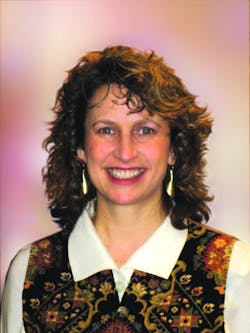
“It’s time we once again put science at the top of our agenda and worked to restore America’s place as the world leader in science and technology,” said Barack Obama on Dec. 20, 2008, when he announced his choices for four top scientific advisers.
As director of the White House Office of Science and Technology, Harvard University physicist and environmental policy professor John P. Holdren will be the president’s science adviser. And Jane Lubchenco, marine biologist and distinguished professor of zoology at Oregon State University, will head up the National Oceanic and Atmospheric Administration (NOAA), which oversees ocean and atmospheric studies and carries out global warming research. Both Holdren and Lubchenco have served as president of the American Association for the Advancement of Science in the past.
Holdren will also cochair the President’s Council of Advisers on Science and Technology along with Harold Varmus and Eric S. Lander. A Nobel Prize winner, Varmus is president of Memorial Sloan-Kettering Cancer Center in New York and former director of the National Institutes of Health. Lander, a genomics researcher, is professor of biology at MIT.
Respect for research findings
Obama’s seriousness about science became clear two weeks earlier when he announced his unorthodox pick for energy secretary: Nobel Prize-winning physicist Steven Chu, who has run Lawrence Berkeley National Laboratory at the University of California since 2004. Chu “has little experience inside the Beltway or with the main business of the Energy Department” (which actually owns the lab he directs), according to the New York Times. The energy secretary post has typically been occupied by a politician; George W. Bush’s first energy secretary, Spencer Abraham, famously called for the dismantling of the Energy Department prior to his appointment, while he was a senator from Michigan.
I find it reassuring that Obama’s picks have a general appreciation for bio-optics technologies. Chu’s Nobel Prize–winning work focused on the use of six laser beams to create what he called “optical molasses,” (aka optical tweezers) to trap supercooled atoms. In a plenary lecture at the American Physical Society’s Centennial meeting in 1999, Varmus, a cellular biologist, cited this work, and also lauded fluorescence spectroscopy among many technologies enabling advances in biology and medicine. And Lander, member of the Whitehead Institute for Biomedical Research, was a world leader of the international Human Genome Project.
Because of these scientists, policy during the coming years is likely to be much different than it has been–and much more conducive to application of scientific research.

Barbara Gefvert | Editor-in-Chief, BioOptics World (2008-2020)
Barbara G. Gefvert has been a science and technology editor and writer since 1987, and served as editor in chief on multiple publications, including Sensors magazine for nearly a decade.